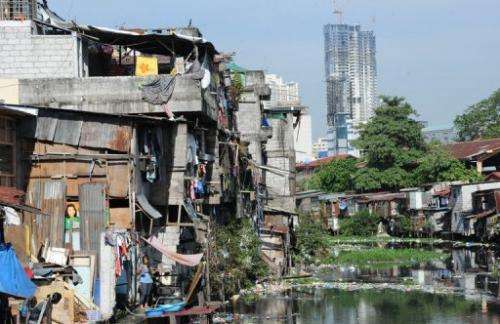Indian women fill containers with drinking water from a leaking water pipe on the outskirts of Hyderabad on May 13, 2011. Nearly two thirds of people in the Asia-Pacific region have no clean, piped water at home despite the region's strong economic growth, according to a major report released on Wednesday.
Nearly two thirds of people in the Asia-Pacific region have no clean, piped water at home despite the region's strong economic growth, according to a major report released on Wednesday.
Water security is a major concern for most countries in the region, but the problem is poor management and a lack of investment in infrastructure rather than short supplies, said the report released by the Asian Development Bank.
"What is lacking in Asia is good water governance," Ranesh Vaidya, a water specialist from Nepal who helped prepare the report, told journalists at its launch at the ADB headquarters in Manila.
"There is a definite link between good governance and good water."
Studies for the Asian Water Development Outlook report, prepared by the ADB and other research institutes, found that 37 out of 49 countries in the region had low levels of water security.
The percentage of Asia's population with access to proper toilets had risen from 36 percent in 1990 to 58 percent in 2010, according to the report.
But that left 1.74 billion people without regular access to proper toilets, with nearly half of those still suffering "the indignity of practicing open defecation".
It said most of those people were in South Asia.
In contrast, Southeast Asia and East Asia were described as "bright spots", where access to proper toilets had expanded to at least 64 percent of their populations, the report said.
Informal settlers' homes along a waterway in Manila on February 18, 2013. Nearly two thirds of people in the Asia-Pacific region have no clean, piped water at home despite the region's strong economic growth, according to a major report released on Wednesday.
The report said 900 million people across the Asia-Pacific had gained access to clean, piped water from 1990 to 2010, describing this as an important achievement.
However 65 percent of people across the Asia Pacific still lived without secure household water supplies.
The situation was particularly dire in Pacific and South Asian nations where only 21 and 23 percent of their populations respectively had access to piped water.
"While the Asia-Pacific region has become an economic powerhouse, it is alarming that no developing country in the region can be considered water secure," ADB vice president for sustainable development Bindu Lohani said.
"Countries must urgently improve water governance through inspired leadership and creative policy making."
The report said $59 billion needed to be spent across the region to get water supplies up to standard, and another $71 billion to improve sanitation.
(c) 2013 AFP

























